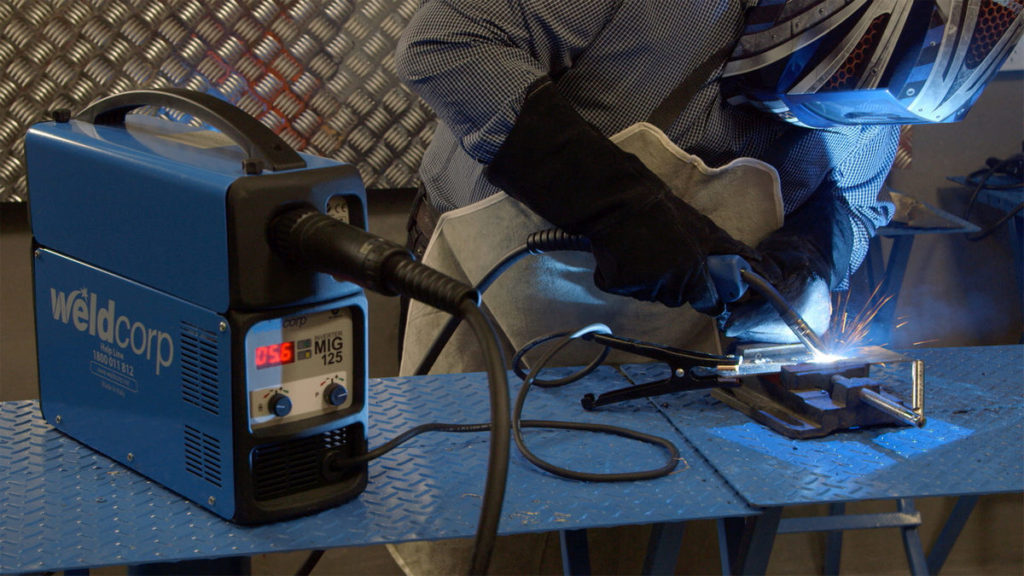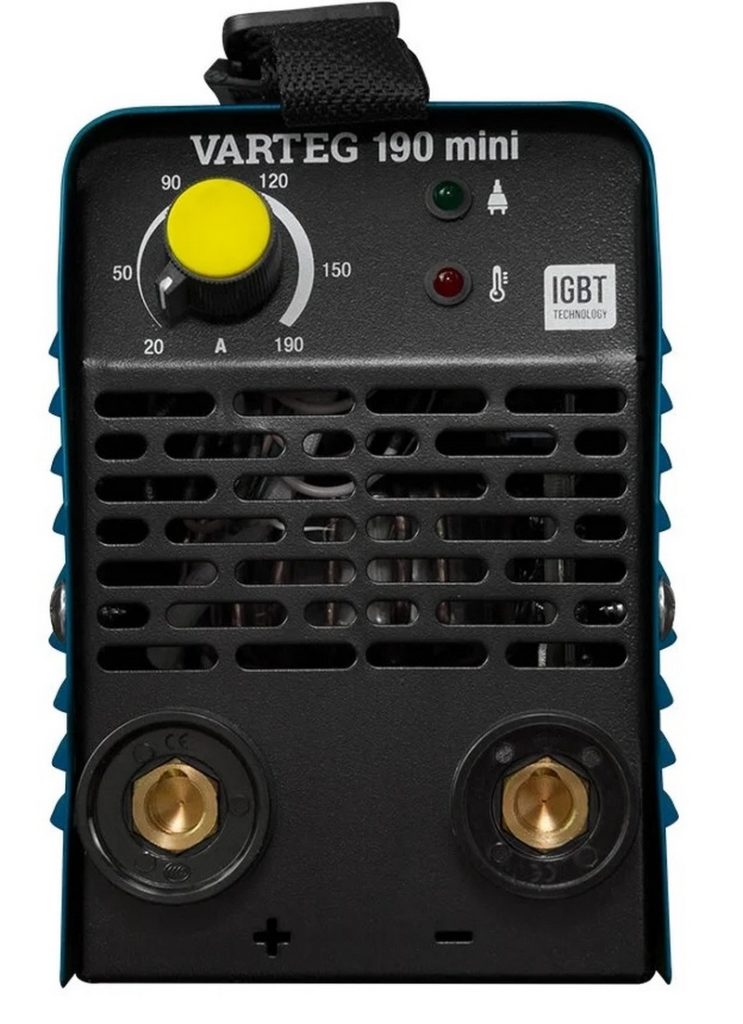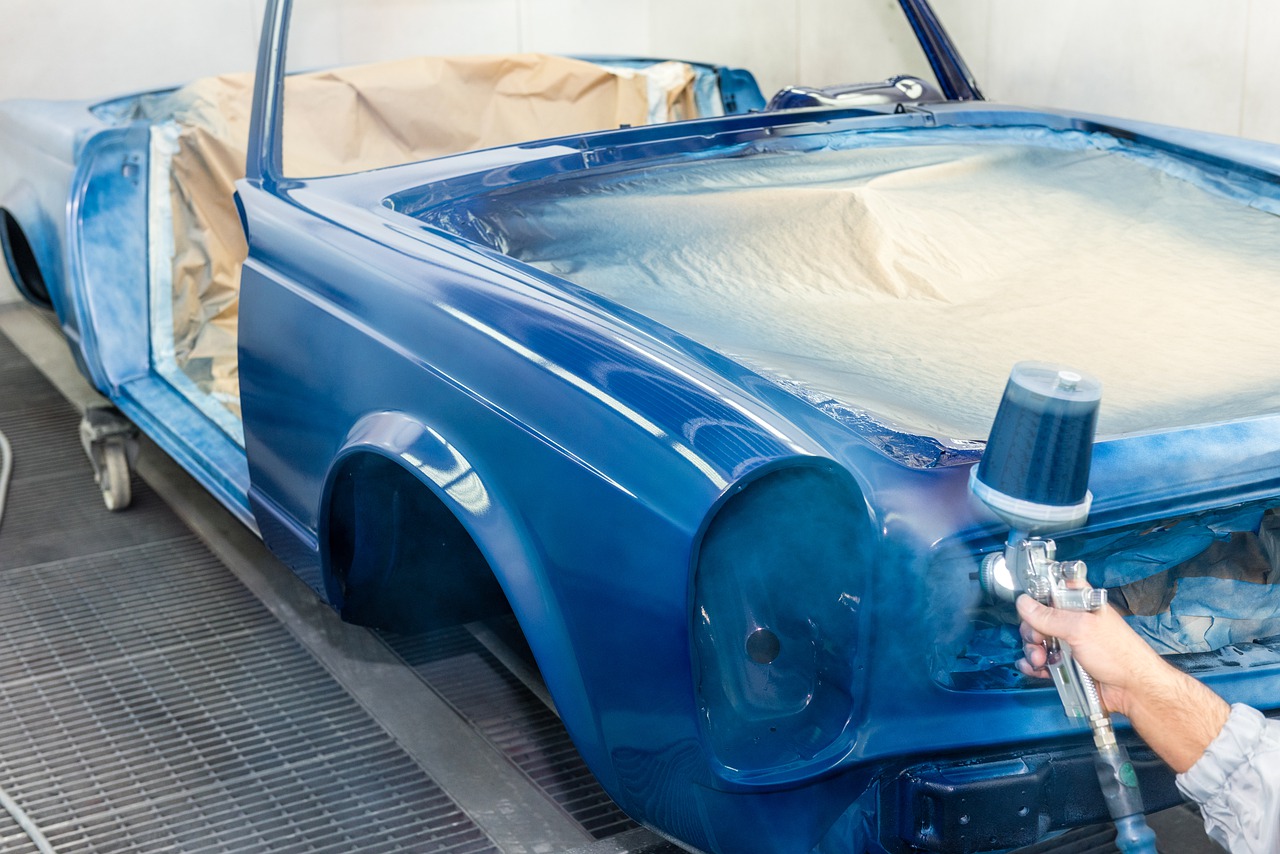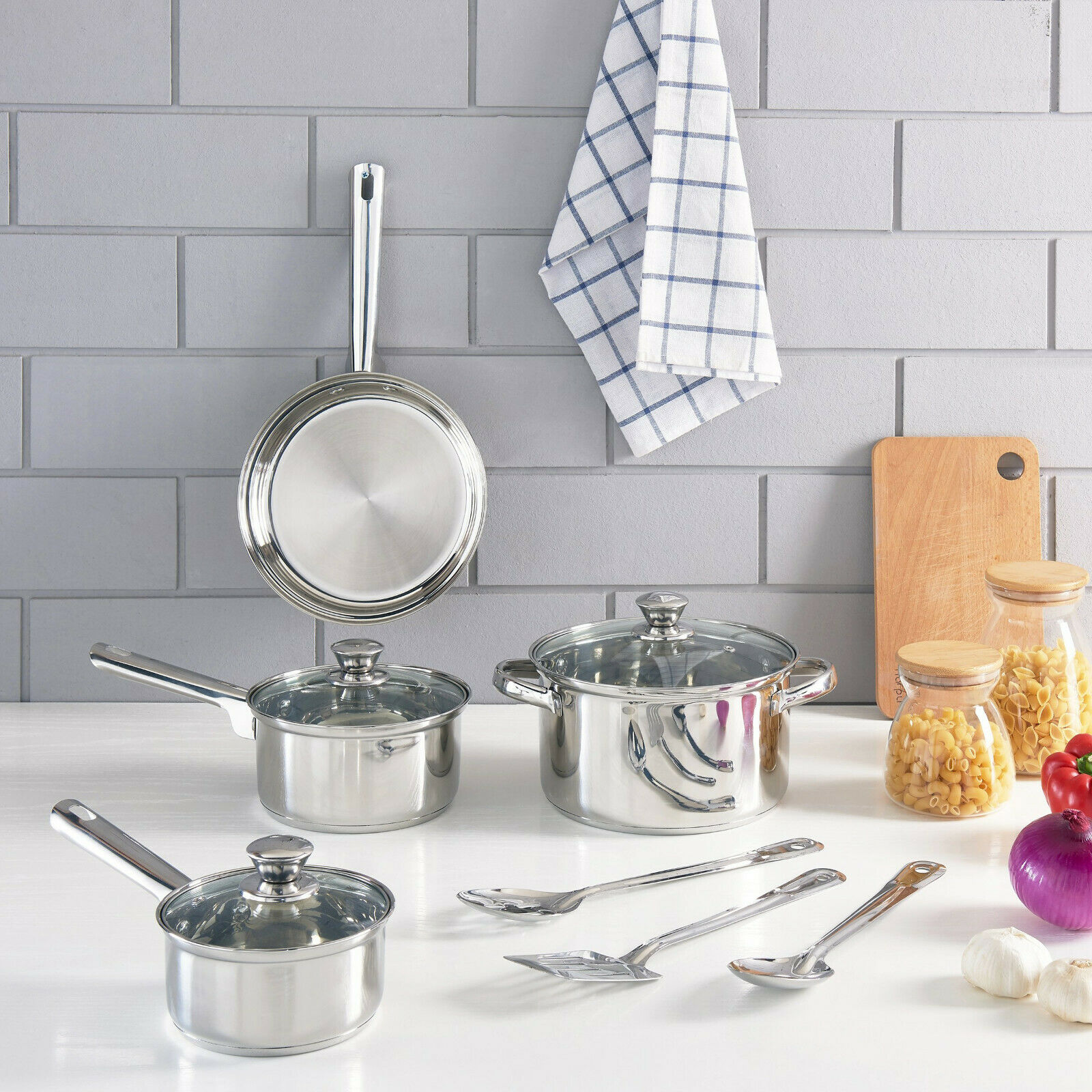Rating of the best mini welding machines for 2022

The welding machine, which is small in size and light in weight, is an indispensable thing for a craftsman working on a private contract or at sufficient heights. Inverters of this type are also widely used among home craftsmen. Most experts agree that the miniature welding machine, due to its small size, is the best type of mobile inverter in the world today. So, with all its modest functional abilities, it is still capable of performing most of the essential tasks, and the possibility of its easy transportation makes the work much more convenient.

Content
- 1 Mini welding system - general information
- 2 Features and rules of operation
- 3 The device and principle of operation of the mini-inverter
- 4 Domestic use as the main scope of mini welding machines
- 5 Self-manufacturing
- 6 Difficulties of choice
- 7 Rating of the best mini welding machines for 2022
- 8 conclusions
Mini welding system - general information
In fact, in professional terminology, as such, the concept of the prefix "mini" does not exist - this is a simple manifestation of "folk" love for the instrumentation in question. Correctly, “mini welding machines” should be called “compact inverters”. However, this class of equipment has gained sufficient popularity recently due to the tendency to reduce the size of any construction and installation equipment, in order to increase its mobility. Nevertheless, even small devices according to their functionality can be divided into:
- household;
- Professional;
- Industrial.
The prefix "mini" can be applied to any welding machine, in which most of the parts, so to speak, are "packed" directly into the main body and which has rather modest functional characteristics.
IMPORTANT! Not necessarily a mini-device is always low-power - it can have good power, but be able to perform a very narrow range of operations.
As a rule, a small welding unit is called an arc welding machine with a weight of 2 kilograms and a power of 150 amperes.
Benefits of mini models
A small welder has many advantages. The main ones are its size and weight. With these reduced rates, there are simply no problems with transportation and storage. If an amateur master often has to use it in the summer season at their summer cottage, then it will not be difficult to bring / bring the installation, and storage in the winter can be done in an apartment / garage. Moreover, the unit will not take up much space during storage and transportation.
In addition, miniature welding equipment does not experience connection problems. For work, it is quite possible to use a standard 220 V socket (even in a power generator) and weld. Operation is also possible with voltage drops, because the equipment does not need a powerful power supply, because. consumes little electricity.
Despite the compact size, the device will be quite functional and will be able to smoothly adjust the current strength and maintain stability during arcing. It is worth noting that, unlike bulky building models, miniature options do not require special handling and work skills.
Disadvantages of mini models
The main disadvantage of mini welding machines can be called their inability to work with electrodes whose diameter exceeds 3 millimeters. Moreover, most standard mini-models will hardly be able to maintain an arc on a 3 mm electrode. From this it is clear that a certain range of work, for which only thick electrodes are needed, is simply not subject to small devices.
The next disadvantage is possible to designate modest technical parameters. Even if there is an inscription “220 Amperes” on the case, a mini-inverter will rarely support more than 150 Amperes. Separately, it should be mentioned that if the supply of electricity is unstable, then this parameter will be even lower.
Due to the fact that the equipment in question has a compact body, one cannot count on a full-weight cooling system in the device. Hence the conclusion - intensive work for a long time is impossible due to the risks of overheating the unit and getting it broken. However, this difficulty can be solved by taking frequent breaks in the workflow.
In addition, due to their compact size, anti-sticking or afterburner systems are not installed on mini-units, which will create additional inconvenience during the welding process.
Features and rules of operation
A miniature inverter, although by and large similar to its "large" counterparts structurally, but it will be very different from them in terms of use. First of all, it means the tendency of small units to overheat. Also, they are poorly resistant to changes in ambient temperature, coupled with changes in humidity, dust can very easily get into them (which is a consequence of the lack of special protection, which is done, again, for the sake of small dimensions). For all of the above reasons, it will require special attention.
Mini models should not be used in direct sunlight or when it is raining. It is unacceptable to store them outside the box (it is recommended to use at least a protective film). Long-term storage should take place only at room temperature, sub-zero temperatures are unacceptable.Operation at maximum current for more than 5 minutes without interruption is prohibited. The diameter of the electrode used should not exceed 3 mm (recommended thickness is 2 mm). During operation, it is required to constantly monitor the condition of the case - it should not overheat. Only high-quality electrodes and cables should be used for welding. If the device began to emit extraneous sounds or even began to smoke, the work should be stopped immediately by de-energizing the device. And finally, small-sized units should not be used for difficult jobs - for example, they will never cope with welding thick iron in difficult environmental conditions.
Also, in order to extend the life of the unit, it is advisable to follow a few simple rules:
- It is recommended to store the welding mini-system in its original packaging in a heated room (up to +55 degrees Celsius) with natural ventilation;
- If the storage temperature was from 0 to +5 degrees Celsius, then before the first start, it is necessary to allow the system to “settl” at normal room temperature for at least 2 hours;
- Before starting work, it is necessary to check all the units and connections of the unit - the traces of oxidation found must be cleaned, and loose connections must be tightened;
- Do not allow drops of moisture, as well as dust and dirt, to enter the body of the system - all this will disrupt heat transfer and cause the motor to overheat;
- It is required to regularly inspect electrical wiring and cables for their integrity;
- When working with the device, you must observe safety precautions, use protective gloves and a mask with light filters.
The device and principle of operation of the mini-inverter
In its appearance, it resembles an ordinary box, inside which is the simplest electronic inverter circuit. It weighs a little, easily undergoes movement from place to place. Most small models are equipped with a special carrying strap, which is very convenient for using the device in high-altitude production conditions.
Its design (in most cases) consists of:
- Radiator for output bridge rectifier;
- Radiator of transistors and diodes;
- Network rectifier;
- Relay for soft start;
- Welding current sensor;
- Integral stabilizer;
- Noise suppression filter and its capacitor.
The units under consideration, during operation, transform electricity, changing its characteristics four times, before creating a current. It will be equal to several tens (at best, a couple of hundred) amperes. This is the direct principle of operation. Small-sized inverters are used to connect various metal objects into one, using a welding arc. The current from the arc enters the metal through special electrodes, heating it. The metal on the objects melts, thereby producing their adhesion.
The main difference between a mini-device and a classic welding machine is that the first one is able to work with high-frequency current. The resulting magnetic induction allows you to lower the 220 volts entering the system up to 30 volts. In this regard, it becomes possible to obtain a power of one and a half to two hundred amperes at the input. Such a force will help to work with metal with a stable and stable arc. The arc will be able to melt and join the metal into a seam properly. Among other things, working with a small-sized model does not require special skills - the main thing is to observe safety precautions.
More precisely, the technical stages of the miniature welding machine will have the following sequence:
- Voltage equalization;
- Smoothing it out with a special filter;
- Transformation of direct current into high-frequency alternating current;
- Decrease in voltage with a simultaneous increase in current strength;
- Current leveling.
Domestic use as the main scope of mini welding machines
Despite the fact that mini-units are divided into both industrial and professional ones, but together with household ones they have the same properties - this is an almost identical amperage and the impossibility of long-term operation without overheating. Household options, most often, are not equipped with special regulators for working with unstable voltage, so it is better to purchase such a device separately in order to be able to select the current strength for comfortable welding mode. Household appliances are rarely able to work for more than 30 minutes in a row without overheating, even at low voltage. It is always worth remembering - the smaller the amateur model, the less functionality it has. However, low functionality also means low power consumption (the savings are obvious), and even with low consumption, the mini-version will be able to make a strong and even seam and work in argon-arc welding.
The undoubted advantage of household equipment will be its relatively low price, but its body is poorly resistant to mechanical stress. Therefore, dropping, even from a small height, a household inverter is undesirable, and even more so, it must be protected from various shocks. The absence of a dust protection and moisture protection system will require periodic maintenance of welding equipment.
Self-manufacturing
Often, in the household, you can find a lot of spare parts from worn-out household appliances (TVs, microwaves, electric kettles, etc.), which can be adapted by self-manufacturing a household mini-welding system.
Making a spot welding device
This is the easiest way and will require:
- Low power transformer;
- Bridge diode;
- Capacitor bank;
- Automatic 20 Amp;
- Current relay (powerful);
- A couple of copper bars (soldering iron tips work great).
First, the secondary winding is removed from the transformer, and three turns of welding wire are wound instead. Next, the secondary winding is connected to a diode rectifier, and its output is connected to a bank of capacitors connected in parallel. The output of the capacitors, by means of a relay, is connected to copper electrodes. Then, the welding itself is carried out in two steps. The first step is to charge the capacitor bank. At the second step, the objects to be welded are combined, the electrodes are pressed in the right place to them, the relay is switched, as a result of which the accumulated electricity is discharged. When discharging, a large current occurs, which melts the metal at the point of pressing. As the molten metal cools, the objects adhere securely.
Difficulties of choice
In order not to make a mistake when choosing a miniature welding system, you should listen to a few simple tips from professionals:
- Before buying, it is advisable to know exactly the voltage at which you will most often have to use the device - based on this information, you will need to select its power. If you often have to work with unstable voltage, then it is better to choose equipment with high power.If the voltage is stable, then both medium and low-power devices will do.
- You should analyze the potential average duration of future welding work in order to immediately determine the need to purchase an external cooling system.
- It is necessary to take into account the type of metal objects that will have to be welded. If you have to work on cast iron, you will need a powerful device, and for copper and stainless steel, medium power is also suitable;
- It is necessary to decide on a set of functions - as a rule, branded devices have a wider option, but their prices are very high.
Rating of the best mini welding machines for 2022
Budget segment
3rd place: "CALIBR, MINI SVI-180AP MMA"
An excellent option from a Russian manufacturer, successfully combining functionality and budget cost. Operates from a standard household electrical outlet, is able to "straighten" minor drops in the network. The variant has a power of 3.8 kW, which is quite enough for simple operations (welding objects of small thickness). The electrodes used should be between 1.6 and 3.2 mm thick. There is a hot start function and an anti-stick function. The established cost for retail chains is 3,600 rubles.

- Compact dimensions;
- Can handle network surges;
- Good operating safety.
- Has a tendency to overheat quickly.
2nd place: CHAMPION IW-140/6.1A mini MMA
An excellent choice for a buyer with a fairly modest financial capabilities. It is distinguished by good versatility, is able to perform a significant range of tasks, can be used in temperature conditions close to critical (in the cold).There is an arc force, anti-stick function and hot start. The whole structure is very compact and does not have a large mass. The recommended price for a store sale is 3,750 rubles.

- Adequate price;
- Multifunctionality;
- Compact and light weight.
- The strength of the hull is questionable.
1st place: "KVAZARRUS 190 mini MMA"
This pattern guarantees almost perfect suture, regardless of the skill of the operator - novice or professional. Perfectly welds objects with a thickness of up to 10 millimeters, easily works from a standard power outlet. The output is capable of delivering voltage from 140 to 240 volts. Welding current varies from 20 to 190 amperes. Works on electrodes with a thickness of 1.4 to 4 millimeters. The established cost for retail chains is 4040 rubles.

- Availability of additional options;
- Acceptable price;
- Easy to use.
- Short electrical cable.
Middle price segment
3rd place: "CHAMPION, IW-160/7.2A mini MMA"
This unit from the middle price segment has standard functionality, so it can be called universal for its class. It can work both at room temperature and is able to withstand outdoor temperatures close to critical for a short time. It is characterized by safety of use and an adequate price. The set price for a store sale is 4,550 rubles.

- Adequate price;
- Versatility;
- Safety of use.
- Relatively low efficiency (about 80%).
2nd place: "Varteg 190 mini MMA"
This compact and lightweight welding machine is very good for use outside the city. It can work from a conventional 220 V outlet, is able to stitch objects with a thickness of up to 10 millimeters. Works on electrodes with a diameter of 1.5 to 4 millimeters. The case is reinforced, which retains moisture and is resistant to temperature extremes. Arc force and anti-stick functions are available. It gained great popularity among amateurs, thanks to its low weight - only 2.5 kilograms. The established cost for retail chains is 5,600 rubles.

- Arc afterburner;
- Anti-stick function;
- Light weight.
- Possible overheating during prolonged use.
1st place: "Wester MINI 160T MMA"
This model is equipped with anti-stick and hot start function. The unit is perfect for country work. Able to quickly weld thin metal objects without loss of weld quality. Operates from a conventional power supply, has low power and does not overload the network. Works with electrodes up to 4 mm. The output voltage is from 155 to 255 Volts and can provide a current in the range from 30 to 160 Amps. Users report a great level of comfort during use. The recommended cost for retail chains is 7,000 rubles.

- Easy and convenient use;
- Quality assembly;
- Availability of additional options.
- Short electrical cable.
Premium class
3rd place: "SPECIAL Mini-210 MMA"
This unit is able to work even with low voltage in the mains. Differs in special compactness and ease. It has a relatively small power, so it is better to use it for welding small parts.However, it is able to cope with most standard household tasks. Transportation is very easy, the case is durable, storage is possible at room temperature. The established cost for the retail network is 7100 rubles.

- small size;
- Light weight;
- Ease of storage.
- Relatively little power.
2nd place: "BestWeld, BESTMINI 180 MMA"
A very expensive and productive device that can work even at a temperature of -20 degrees Celsius. Perfect for fastening metal parts of small and medium thicknesses. Works with electrodes with a thickness of 1.6 to 4 millimeters. The model is equipped with an adjustable arc force. The housing is protected from moisture penetration and is specially reinforced with frost-resistant materials. At the same time, it has a very compact weight - only 2.7 kilograms. The recommended retail price is 9900 rubles.

- Frost-resistant;
- There is an arc force function;
- Work on parts of medium thickness.
- Short electrical cable.
1st place: "Svarog TECH ARC 205 B (Z203)"
A very expensive device, which is a transitional model between the domestic and professional class. In the "mini" operating mode, its power consumption can reach up to 9 kW, which threatens with "drawdowns" of voltage. However, the device has a digital indicator of welding current, thanks to which it is possible to compensate for “drawdowns” by turning the knob to the desired value. In order to facilitate the welding process, the manufacturer endowed the unit not only with anti-sticking and hot start options, but also provided an additional arc afterburner that can be adjusted during ignition. Additional safety of the working process is guaranteed by the function of "lower voltage of idling", which is important when working in conditions of high humidity. This device can hardly be called a full-fledged device for argon-arc welding, therefore it is preferable to weld only light metals on it. Yet, it will perfectly cope with the welding of stainless and carbon metals, brass and bronze. The “ignition by touch” option will make it much easier for a beginner to master the work with the electrode. This model is certified by the "National Welding Control Agency", so it can be used for welding pipelines, boiler lines and heavy-duty structures. The established cost for retail stores is 30,000 rubles.

- Simplified one-touch arc ignition;
- Long work is possible;
- The current can be adjusted.
- High price;
- The impossibility of welding aluminum.
conclusions
In addition to the brands presented in the rating, I would like to dwell separately on such brands as RofHelper from Italy and Brima from Germany. By purchasing equipment from these companies, in 99.9% of cases you can be sure of the quality, sufficient functionality and durability of welding systems. However, do not neglect devices equipped with their own liquid fuel engines. They will be the ideal solution for working in difficult environmental conditions, and even more so at height. In any case, it is always worth remembering that sacrificing the full functionality of the mini welding system, the user acquires a high degree of welding mobility.
new entries
Categories
Useful
Popular Articles
-

Top ranking of the best and cheapest scooters up to 50cc in 2022
Views: 131652 -

Rating of the best soundproofing materials for an apartment in 2022
Views: 127691 -

Rating of cheap analogues of expensive medicines for flu and colds for 2022
Views: 124520 -

The best men's sneakers in 2022
Views: 124034 -

The Best Complex Vitamins in 2022
Views: 121940 -

Top ranking of the best smartwatches 2022 - price-quality ratio
Views: 114981 -

The best paint for gray hair - top rating 2022
Views: 113396 -

Ranking of the best wood paints for interior work in 2022
Views: 110319 -

Rating of the best spinning reels in 2022
Views: 105330 -

Ranking of the best sex dolls for men for 2022
Views: 104367 -

Ranking of the best action cameras from China in 2022
Views: 102217 -

The most effective calcium preparations for adults and children in 2022
Views: 102012









